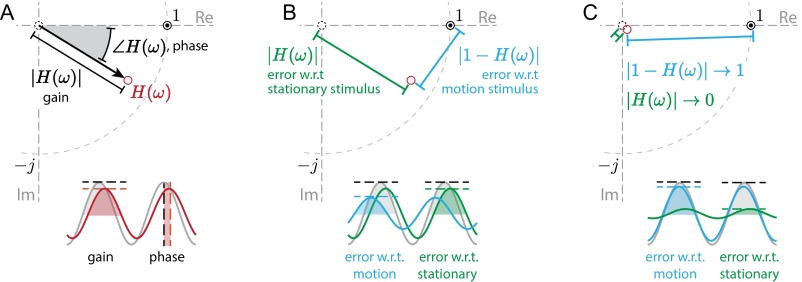Fig. S1.
(A) The behavior transfer function is a complex-valued function of frequency. At each frequency, the transfer function prescribes a gain, the ratio of output and input amplitudes, and a phase, the relative timing of the output sinusoid with respect to the input as an angular difference (measured in degrees or radians). On the complex plane, gain and phase are represented as the magnitude and angle (with respect to the positive real axis) of this vector. Perfect tracking occurs at the point , the point where gain is unity and phase is zero, which is denoted by the bullseye. (B) The normalized tracking error with respect to the motion stimulus is the magnitude of the difference between perfect tracking and the behavioral response (that is, the gain of the error signal; shown in cyan). The tracking error with respect to the motionless stimulus is simply the magnitude of the behavioral response (green). (C) As the behavioral response decays (as H, , and all do at high frequency), the tracking errors with respect to the moving and stationary stimuli approach one and zero, respectively. This condition serves as a baseline case, and deviations from this condition evidence a control policy favoring one sensory modality over another (Fig. 2 D, ii and E, ii). w.r.t., with respect to.

